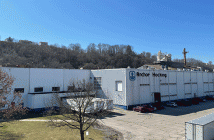Time is money, and the world of beauty is no exception to this rule. Before a new mascara finds its way into the stores, it goes through an extensive development process. Although they may look similar, all mascaras are different. Eyelashes are individual, and different cultures prefer different styles. Therefore, it is important to conduct tests under real conditions once the R&D department has designed a new model.
So far, mascara brush prototypes have been produced from a hard plastic material using a 3D CAD (computer-aided design) drawing. This could take up to 18 weeks because the manufacturer had to make a drawing, create visual patterns through 3D printing, adjust the drawings to customer needs, and create a pilot tool for the injection molding process. For every single mascara bristle, a small hole – called a cavity – needed to be milled into the injection mold. With the prototype, customers had the opportunity to evaluate the brushes visually. However, the bristles were too stiff to actually test them under real conditions. Further, the production process took a long time and was expensive.
Sulzer is expanding its applicator business. Amaury de Menthiere, Division President of the new Applicator Systems (APS) division, explains why mascara and co. fit in well at Sulzer and where he wants to take the new division.

Amaury de Menthiere, Division President Applicator Systems
Experimenting with new materials and technologies
Researchers constantly uncover new materials that can be processed using 3D printing. Today, the processes are still cost-intensive and are used primarily for the production of prototypes or components in small quantities. Geka has used 3D printing technology for mascara brush prototypes since 2007.
Thanks to the new material and method, our product designers were able to accelerate the development process of mascara brush prototypes. We can introduce products to the market more quickly, and they meet customer requirements even better.
Amaury de Menthiere Division President Applicator Systems
To speed up the development process, the teams were looking for alternative methods and materials for the production of prototypes. Eventually, they were successful: A new type of plastic came onto the market. This specific material ensures that each individual bristle is stable enough to separate the eyelashes yet elastic enough not to hurt the eyes.
The material was set but the process not yet. The teams made many attempts to find the best manufacturing process. The solution was an additive manufacturing technology called selective laser sintering (SLS).




